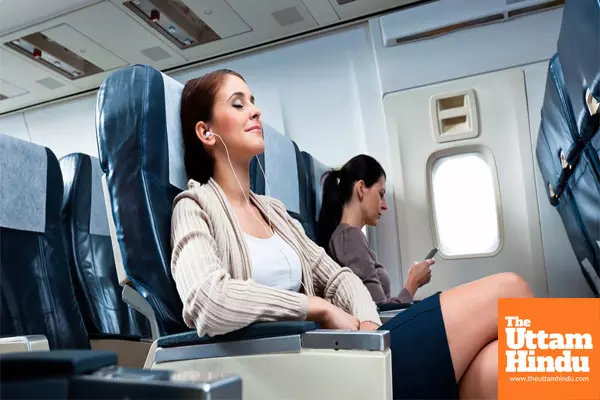
Crossing your legs on a plane: A hidden health risk you need to know about

New Delhi (The Uttam Hindu): Air travel follows familiar safety protocols, such as fastening seatbelts and switching electronic devices to airplane mode but one lesser-known risk is the seemingly harmless habit of crossing one’s legs while seated. Although many passengers cross their legs for comfort, medical experts warn that it may increase the risk of deep vein thrombosis (DVT) a serious condition where blood clots form in the veins. The cramped space and prolonged immobility of flying already contribute to circulation problems but crossing the legs further restricts blood flow, which could lead to life-threatening complications. DVT is particularly concerning on long-haul flights where sitting for extended periods with limited movement raises the likelihood of clot formation. If a clot dislodges and travels to the lungs, it can cause a pulmonary embolism (PE), which is potentially fatal.
Expert a pulmonary and critical care specialist, explains that the lower barometric pressure inside an airplane cabin triggers an inflammatory response in the body, making it more vulnerable to clot formation. Beyond the immobility from sitting still, crossing one’s legs adds additional pressure on the veins and restricts blood flow, increasing the risk of clots. Those with preexisting conditions such as obesity, pregnancy, clotting disorders, or recent surgery are at an even higher risk.
To reduce the risk of blood clots during air travel, medical professionals recommend several preventative measures. Passengers should aim to move around regularly—standing, stretching, or walking in the cabin, especially on long flights. Even small movements, such as flexing and extending the feet while seated, can improve circulation. Staying hydrated is essential, as dehydration thickens the blood, increasing clotting risk. It’s also advised to limit alcohol and caffeine intake and drink plenty of water. For those at higher risk, wearing compression stockings can help promote blood flow and reduce swelling. Above all, avoiding the practice of crossing one’s legs and changing positions periodically can reduce pressure on the veins, ensuring better circulation and a safer flight experience.
In conclusion, while crossing your legs may seem like a comfortable posture, it could contribute to serious health risks while flying. Taking simple preventative measures can go a long way in ensuring a safer, more comfortable journey. Let this serve as a reminder to prioritize both comfort and circulation on your next flight.

